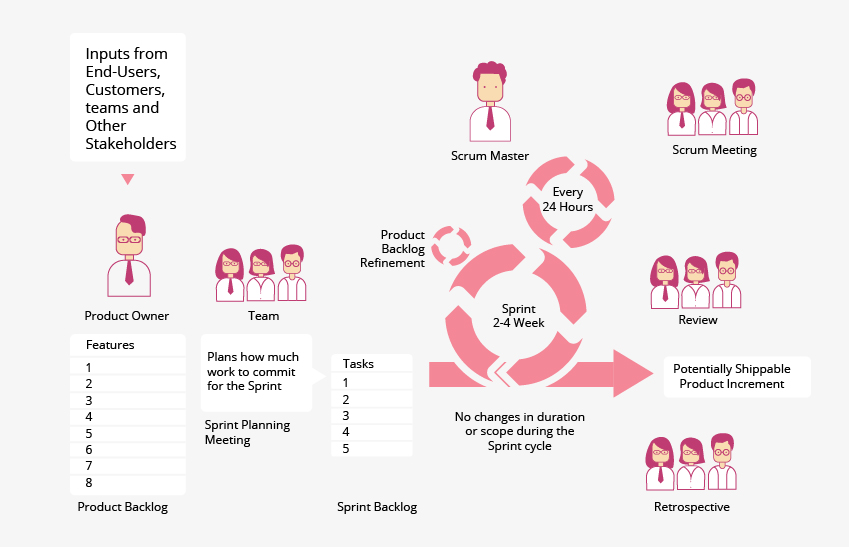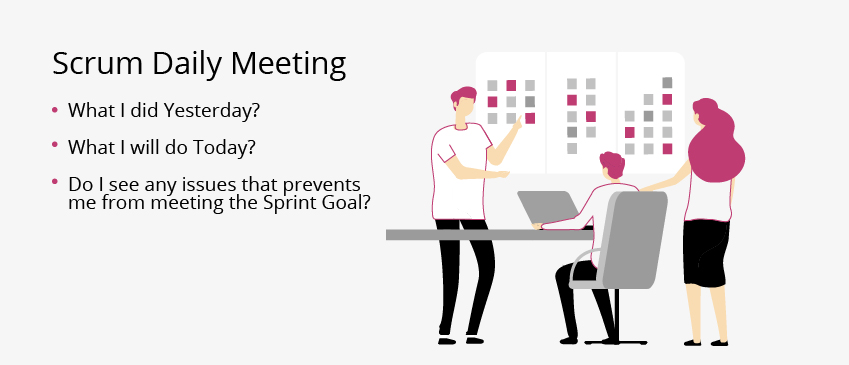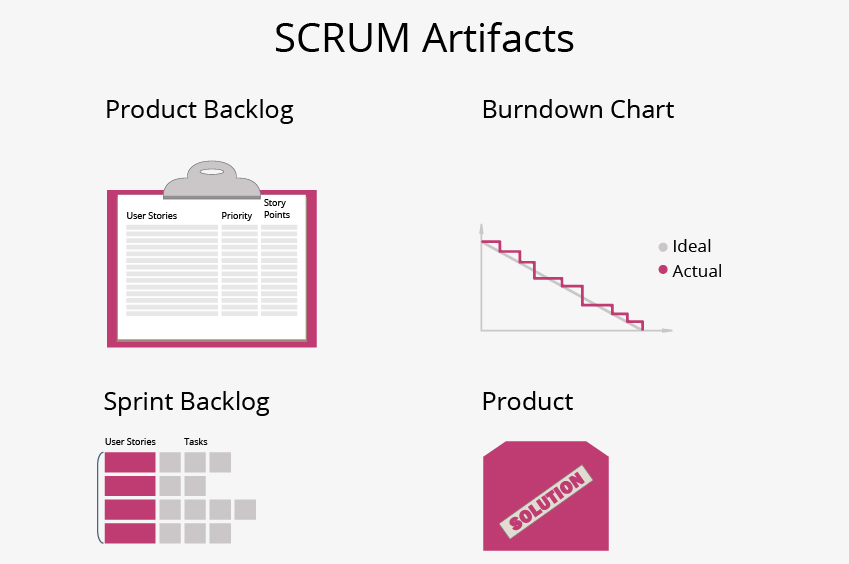Top 21 Scrum Best Practices for Efficient Agile Workflow
Scrum, arguably the most popular Agile framework in use across industries, has been proven to help develop products in a timely and highly efficient manner. The 14th State of Agile Report states that 97% of organizations practice Agile development, out of which 58% prefer to use Scrum as their go-to method.
And with good reason, too! Scrum lays out a series of simple principles and processes, which are very easy to follow and get measurable results. Not only does the frequency and velocity of product delivery increase, but changing requirements are also accommodated—an imperative in the current volatile market conditions where to be inflexible means to be left behind.
In this article, we review the top Scrum best practices that streamline and optimise Agile workflows, creating stellar results.
For those who are new to Agile and Scrum, let’s start with a brief introduction.
Scrum is a lightweight Agile framework that allows product development to be carried out in short and incremental iterations, through collaborative teamwork.
During each iteration, called a Sprint, the delivery of a small increment of value is completed. Sprints are time-boxed, usually lasting two to four weeks, and allow the team to break down complex projects into short, doable tasks.
As the team catches up on a daily basis, as well as at the end of every Sprint, work becomes transparent and obstacles, if any, are ironed out before they escalate out of control and hinder progress. The project becomes more flexible and adapts to changes easily, as requirements are re-evaluated and task priorities are re-grouped at the end of every sprint.
There are three clearly defined roles in Scrum.
The Product Owner is the person who creates the Product vision, sets the direction for each sprint, and acts as the bridge between the team, customers and stakeholders. The PO maintains and manages the Product Backlog which determines the progress of the product development.
The Scrum Master is the one who holds things together, helping the PO to define value, and communicating that value to the team so that they can deliver it. He or she creates and facilitates an environment that is conducive to Scrum success.
The Scrum Team is a cross-functional, self-organising group of developers who are jointly responsible for product delivery. A team usually comprises not more than seven people, who are required to communicate and collaborate well together.
There is no hierarchy on a Scrum team, and the Scrum Master is considered their ‘servant leader’ and not their manager.

Whether you’re a product owner, Scrum master or a team member, here is a set of best practices that can help to improve your efficiency and set you on the track to team success!
1. Create Product Backlog in conjunction with stakeholders.
The stakeholders can contribute effectively to creating the product vision, and must be roped in for the inputs while creating the product backlog. During the negotiations on the backlog and while re-prioritising tasks, the team and stakeholders can come to a better understanding of the vision and what is expected to be delivered.
2. Stakeholders must participate in Scrum meetings.
When stakeholders and Product Owners participate in Scrum meetings, they will understand the workflow and the ways in which the team works. In turn, they can offer valuable feedback on the progress of work and about the deliverables during each sprint.
3. Try not to regroup teams.
When a team has worked together successfully on previous projects, they will already be sharing a rapport and understanding of each other’s capabilities. Rather than breaking the work rhythm, the best practice would be to keep productive teams together. This, of course, is not always possible as some projects will need regrouping due to different skill requirements.
4. Work on team building.
Team building is a practice that should never be neglected or sacrificed for want of time. A group that is cohesive will work better and faster, and the Scrum Master should use team-building techniques and activities to foster cooperation and collaboration.
5. Don’t sit down during Stand-ups!.
The reason why the daily meeting is called a Stand-up is because people are expected to stand up, and not sit down! Typically, meetings where everyone is standing up are shorter and get the expected results, while sit-down meetings tend to drag on and on.

6. Nurture remote communication.
When teams are distributed across geographies, or work-from-home mandates are in place, it’s important to set guidelines for remote communication. Important details could be missed out on calls, and critical notifications should be documented over a shared tracker so that they are flagged. Collaboration software makes it easy to set up notification messages to all the people concerned.
7. Keep stakeholder in the loop while estimating.
It is always better that the principal stakeholder should be present during estimating meetings. If the team has any doubts, they can get cleared at once. What’s more, the stakeholder will understand the why, what and how behind estimation and this will help to establish trust and accountability.
8. Plan a new sprint only when the backlog has enough items.
Only when the product backlog has enough items for the next two sprints, is it time to plan the next one. Scope creep happens when there is uncontrolled growth in the scope of the project, because there was poorly defined scope for the next few sprints in the backlog.
9. Set goals clearly.
Unless the goals for each sprint are clearly laid out, it could become very difficult to prioritise the tasks in the backlog. The team and customers must align their objectives in order to set the goals that the team will achieve during each sprint. Based on the goals, the Product Owner in conjunction with the team will choose the tasks that must be completed during the sprint.
10. Estimate using Planning Poker.
Planning Poker is a proven, easy to use technique for estimating and planning. Using this simple technique, accurate and doable estimates can be achieved.

11. Set time aside daily for risk mitigation.
By planning a six hour day and leaving two hours aside each day for risk mitigation, it is possible not to fall short on time estimates. Many unexpected things could happen that turn timings awry, and by doing this it is possible to be prepared for unforeseen circumstances.
12. Do not stretch or cut short sprint timings.
The time frame for a sprint should not be stretched or curtailed, as otherwise the team will be tempted to neglect set timelines in the expectation that they will be reset. Even if a story is unexpectedly big and cannot be completed in a sprint, at the end of the agreed-upon timeframe the sprint should end, and the items that were not completed should be moved to the top of the backlog for the next sprint. At the same time, if the stories are completed ahead of time in a sprint, then some smaller stories could be added to help keep the schedules on track.
13. Keep sprint backlog separate from product backlog.
The product backlog is updated regularly, while the sprint backlog is kept frozen and can be referred back to at any time. Do not mix up the two or combine them.

14. Use task prioritisation techniques.
Task prioritisation techniques such as MoSCoW, Business value approach, Kano model, Walking skeleton and so on can be used to prioritise tasks in the product backlog. Simple excel documents can list out backlog tasks and show the status and priority (must, could or should are most frequently used terms). Use the technique that makes best sense for your team, and that everyone is able to understand.
15. Itemise user stories by assigning IDs.
To cut through ambiguity, assign an ID to each user story so that the team knows exactly what is being discussed. Two user stories may sound similar but be different, and team members may think that a different story is being discussed.
16. Map functional and technical dependencies.
Dependencies could be functional (defined by stakeholders) or technical (defined by the engineering team). By mapping both types of dependencies, the workflow is smoothened and optimised, and bottlenecks can be identified and removed.
17. Use a Scrum board.
Many people work better when they have visual aids to guide them. A Scrum board is a very useful tool in this regard. The board is a visual representation of User stories, tasks that are yet to start, in progress and done. It can also indicate blocks, testing tasks and reviews from the Product Owner.
Tools like JIRA and Trello are very easy to use and understand, and offer great value to the team.

18. Use sprint burndown charts.
Burndown charts that visually depict the progress of the sprint are a great visualisation tool that detects issues when they appear, and helps to resolve them before they escalate. Completed tasks per day are mapped against the planned tasks, giving an indication if the progress goes off track.
19. Use release burndown charts.
Release burndown charts depict the sprints that are needed to complete, or release, the product. The team can decide whether they need to adjust the timeframe or not. Using these charts is a good practice to follow, especially if the product backlog was updated over the course of the project with new user requirements.

20. Chart velocity.
By calculating the velocity, the progress of work can be charted against initial estimates, and used to better predict team commitments and results. If the velocity is changing a great deal, then the sprint planning must be revisited and made more reliable.
21. Invest in good quality software.
Tools that are built for Agile teams can help with project planning, time tracking and measurement of metrics. JIRA, Toggl, Git, and Slack are popular tools that are very supportive and can help to streamline and optimise workflows.
To sum up…
Implementing a smooth, streamlined Agile workflow could take a lot of planning and strategizing, but with the right mindset, approach and collaborative tools, it doesn’t have to be difficult! Each team is different, and you might need to experiment with a few approaches and Scrum best practices till you find the one that’s right for you.
After all, the main premise of Agile is that you should be flexible, and adapt when the need arises!
Research & References of Top 21 Scrum Best Practices for Efficient Agile Workflow|A&C Accounting And Tax Services
Source
